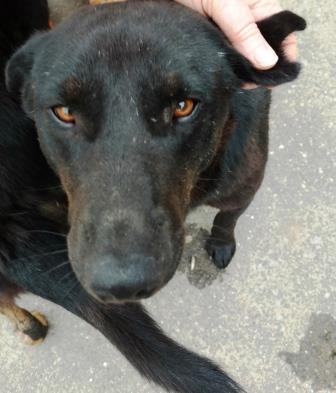They move around in ferocious packs and sometimes scare the living daylights out of kids and older citizens! Towns like Patna with a formidable stray dog population should learn from Bhutan. The Newsnet team trawled around the web to discover a dog magazine called The Bark! And we got our paws on this fascinating piece of news.
Now, Bark’s long-time contributing editor Twig Mowatt recently visited Bhutan, the country with the enviable “Gross National Happiness Index” and she saw how the Bhutanese are tackling their stray dog population.
“You notice it as soon as you get off the plane,” says Twig Mowatt, an animal rights activist and editor of Bark Magazine. “They’re along the highways. They’re in front of every business, in front of the gas station, the police station, hanging out by people’s houses. You’re stepping over them on the sidewalks. They’re everywhere.”
Dog “ownership” is a loose concept in Bhutan. Most are considered community dogs. But the stray dogs are precisely the reason Mowatt traveled to Bhutan. “Bhutanese people, who are largely Buddhist, believe that sentient beings should be cared for.” And the Bhutanese do care for them though not in their homes.
In Bhutan, most dogs are strays. They’re really community dogs. There isn’t a lot of individual pet ownership the way people in Patliputra Colony would like to see. Those people who own dogs worth thousands of rupees with pedigrees a yard long. They think that the stray dogs are dangerous.
In Bhutan, dogs roam the streets, but there are dogs that are loyal to a certain territory. There might be seven or eight that live on a certain block and then the people who live in that area feed the dog. So they do care for the dogs. They don’t want to hurt them. They believe that would be bad karma for them.
But Bhutan by the mid-2000s had a huge problem, (just like Patliputra Colony,Patna,India). The stray dog population was getting out of control. Illegal meat markets were leaving scraps that attracted packs of dogs. Tourists, who are required to spend a minimum of $250 a day to be in Bhutan, were finding them menacing.
“The population of dogs was growing and Bhutan was getting a lot of complaints about barking dogs at night that were keeping the tourists up,” says Mowatt.
In 2008, Bhutan wanted to clean up the streets in advance of the coronation of thenew king, so they reached out to Humane Society International for help.
“Bhutan had the idea that they wanted to put the dogs into big government pounds and just keep them sheltered that way,” says Mowatt. Humane Society International told Bhutan it was bad idea. But Bhutan went ahead and put the dogs in big dog pounds.. Thousands of dogs died. And the Bhutanese learned something else: No dogs leads to more rats.
A lesson for all our growing Indian cities with heaps of garbage and a weak waste disposal system. Here’s what happened in Thimpu, Bhutan: “If you take away the dog population — they’re very much a part of the ecosystem there — you’re really messing with mother nature. So the rats had moved in to replace the dog void and they were just inundated with rats.
But Humane Society International persisted and suggested that Bhutan try something that was unprecedented: A nationwide spay/neuter and vaccine program. “They said, ‘Look, we know this is the only thing that will work. We know it’s going to take a little time but in the long run this is the only effective solution.'” And the government agreed.

Humane Society International initiated the Catch-Neuter-Vaccinate-Release method. Dogs are released later the same day in the same location where they were captured. When the program started in 2009, Humane Society International estimated there were about 100,000 stray dogs in Bhutan, largely in the cities. Mowatt says it took a while to get things up and running.
“First, they didn’t have enough vets so Indian members of Humane Society International sent in a vet team.” Then they started creating a Bhutanese team, training vets, vet techs, even dog catchers. They use nets, which is very humane but it’s not easy. These street dogs are real escape artists. They’re biggish dogs. They’re super smart. They work together.”
The method of spaying and neutering they use is less invasive. The vets know how to make a tiny little incision and when the incision is small, everything else is easier and faster.” That makes recovery time faster. They make a tiny incision and go in. “I liken it to a crochet hook. And they just grab the stuff. They can do a spay in under ten minutes and a neuter in under five. It’s like watching an artist,” says Mowatt.
The stitches that are left are inside the dog so there’s nothing to scratch, making the chance of post-surgical infection minimal.
Seven years on, the program has spayed or neutered and given rabies vaccine to 71,000 dogs in Bhutan.
“The way you can recognize a dog that’s been spayed or neutered is they take a little triangular notch out of its left ear,” she says. “And I have to say, everywhere I went, I would hike up to some monastery in the hills or trekking along the rice paddies and every single dog I saw had this triangular notch.”
Bhutan could be a model for other countries but it takes government buy-in. “The fact that the government was fully on board was crucial, because it enabled Humane Society International to go in and do this complete program,” she says. And they’re not done yet.
“They’re going to continue checking and following up, because the real shift in the size of the population of dogs isn’t going to be noticeable for probably another five or six years,” Mowatt continues. “The adult dogs who have been spayed or neutered are going to start dying of natural deaths. And at that point, they’ll have all these statistics in place to show how effective this has been.”
So, don’t you think that it’s time your Chief Minister or the Chief Secretary gets in touch with the Indian branch of the Humane Society International? And what should be your contribution to keep down the stray dog population?



Street dogs, if managed well, will never be a problem. But Bihar or elsewhere, the people’s narrow and selfish outlook doesn’t change. Hence we’re barking up the wrong tree!